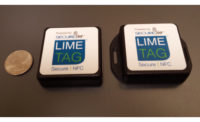True Plug-and-Play Solutions
Today’s energy control tools offer true plug-and-play features that give operators more control from afar












Gone are the days of operators manually monitoring lines, adjusting and re-adjusting switches and scribbling results in a notebook. That’s because today’s operators can monitor energy usage, food safety measures and line efficiency across multiple plants or locations with a press of a button.
Energy isolation valves
“As food processing and packaging only becomes more and more automated, safety systems are becoming ubiquitous,” says Eric Cummings, global industry manager, safety for Ross Controls. “They are integrated into the design, maintaining worker and product safety. They are not afterthoughts that can impede productivity; they allow workers to do their jobs in a safe way, efficient way. This trend will only continue.”
That’s why Ross Controls, Troy, Mich., introduced new stainless-steel L-O-X energy isolation valves, a washdown solution for applications where corrosion or contaminants are of concern. The valve is lockable in the off position thanks to a tamper-proof locking mechanism and a large exhaust port that provides rapid pressure relief. The L-O-X comes with a pressure sensing port—either a pop-up indicator or a pressure switch—and meets OSHA, ANSI and CSA standards.
“The surfaces are sloped, removing potential pooling areas, and there is a redundant sealing and a balanced design to prevent ingression,” says Cummings. “The valve can be specified based on the pipe size and flow rate requirements of the system.”
More than just refrigeration
Hench Control Energy Management Systems doesn’t just offer refrigeration controls. Instead, the Richmond, Calif., company provides what is said to be a true energy management system for industrial refrigeration, complete with propriety hardware, including motherboards, computer chips and internal bridging components.
“Our energy management system is truly plug‐and‐play with proven installations to draw from, all of which are compatible with our proprietary hardware,” says Matt Chang, vice president of sales and marketing. “The microprocessing operating system is multi‐dimensional and analyzes, evaluates and takes action on a multitude of variables that occur in industrial refrigeration and processing plants. Because the energy management system is not simple ladder logic, it does much more than standard automation. So, in addition to the peak demand management and compressor control that other refrigeration control systems may be able to do, the Hench energy management system also balances, optimizes and maximizes energy savings in every area possible based on complex algorithms and thermodynamics.”
Hench modules operate individually as well as in a networked environment. If the main CPU goes down due to a power outage or other type of catastrophe, the specific and individual controllers continue to effectively manage the refrigeration equipment, maintaining the integrity of the cold chain, Chang adds.
In 2014, Hench plans to roll out a new version of its graphical user interface.
“This version is not just a standard update with a few new bells and whistles, but we are completely changing our platform to a HTML web-based program,” says Chang. “This not only improves the functionality as well as is more visually appealing, but also improves remote accessibility, including mobile applications without using a third-party program.”
Next year also has Hench developing new motherboards and hardware controllers.
“A few specific advantages include no single point of failure, as each controller will run its own software, and configuration will be more distributed than our current setup with much more I/O that can be both digital and/or analog,” adds Chang. “The controllers will communicate with each other directly without needing a master computer to display the data and can be tied together with a combination of both wired and wireless connections.”
End-to-end solutions
OutSmart Power Systems, Natick, Mass., developed an end-to-end solution for granular, low-cost, comprehensive energy and equipment monitoring in refrigerated and frozen food plants, distribution centers and cold storage facilities.
“OutSmart brings intelligence to power distribution systems in buildings and provides energy analytics by aggregating thousands of circuit-level measurements from multiple facilities into a single interactive web application,” says Leo Ryan, vice president of business development.
For example, EnergyMate is a miniature, low-cost sensor that can be deployed at a circuit or load level in sub-panels, main distribution panels or motor control panels. Each self-contained EnergyMate utilizes advanced sensing technology, on-board processing for smart reporting and an integrated voltage probe for each circuit. The sensor can be used to monitor key metrics such as duty cycle, run time, cycle times and peak and minimum consumption.
The SensorMate complements the EnergyMate by monitoring high-amperage incoming services and loads in large buildings and industrial environments at speeds ranging from 250 amps to 10,000-plus.
The LoadRunner serves as a local communications hub, connecting up to 32 EnergyMates and SensorMates (96 wires) through a single, multi-drop ribbon cable through which power and communications are delivered. These sensors continuously capture data, but only send readings to the LoadRunner when a deviation is detected, making efficient use of network bandwidth while providing immediate alerts of unexpected events.
And, the LoadMaster is the central gateway of the OutSmart system. It receives information from LoadRunners via the existing powerline wires. The LoadMaster coordinates all activities and communicates across the internet to cloud-based OutSmart servers for higher-level data aggregation, reporting and analytics.
“The OutSmart solution adds a new and vital layer of energy information that can be used to spot problems, verify success or failure of energy saving measures and control energy use and costs for processors, warehouse distributors and cold storage providers,” says Ryan. “In the food vertical, where energy consumption typically accounts for 10% or more of operating costs, energy costs can be greater than five times gross profits—every dollar saved in energy is the equivalent of about $50 in grocery sales. In these kinds of environments, the OutSmart system provides a baseline indicating where energy is going, identifies equipment problems and validates changes and tracks the persistence of these changes.”
Easy-to-use user interface
Logix, Kirkland, Wash., provides a refrigeration energy management system utilizing a distributed control architecture with an easy-to-use user interface called Clarity to provide the operator all of the tools to control their refrigeration system as efficiently and safely as possible, says Lee Trautman, sales manager.
This system controls all ammonia refrigeration system equipment, provides direct communications through ModBus or ethernet to all compressor microprocessors and VFDs, offers easy-to-understand software (no special computer skills required) and auto dialer and email messaging.
“A Logix refrigeration control system will reduce the power bill, reduce the labor needed to operate the refrigeration system and help with PSM/OSHA documentation,” Trautman says. “Logix monitors all ammonia detection devices 24/7 and will take action once ammonia levels are above the user-defined setpoint.”
Temperature controllers
Athena Controls Inc., Plymouth Meeting, Pa., launched Maestro, a suite of temperature controllers, sensors and data recorders for process equipment used to manufacture fast moving consumer packaged goods such as prepared foods. These controls are designed to be easily retrofit onto working production lines with minimal downtime or for use in new equipment.
Maestro systems allow users to manage temperature, power consumption and other variables. Recorders collect and store process data in a choice of formats—open CSV format or secure check-summed format for data integrity. These products communicate easily with existing modbus factory floor networks.
“The Food Safety Modernization Act (FSMA) will shift the FDA’s approach to food safety from response to prevention. This will be accomplished by holding refrigerated and frozen food production facilities accountable for enacting anti-contamination measures. They will also be responsible for all documentation. This presents a problem for mid-sized facilities that cannot afford a PLC. Athena’s products allow them to precisely measure and manage temperature, power, connectivity and processes, capturing the data so it can be documented for the FDA,” says Robert Schlegel, president.
Detection technology for harsh environments
LeddarTech, the Canada-based owner of the patented LeddarLED-based detection technology, introduced its new Industrial LeddarSensor, a unique detection and ranging product that can detect, locate and measure all types of objects—solid or liquid—even in the harshest conditions. As it contains no moving parts and comes in an IP67 enclosure, the Industrial Leddar Sensor is rugged and weather-resistant, always ensuring unparalleled performance.
Optimized for 165-foot detection, the Industrial LeddarSensor provides both distance and angular positioning, continuously analyzes an area of 16 segments and can be configured at the touch of a button. The sensor has a built-in Presence Detection Mode where the outputs can be set according to whether or not there are objects within configured detection zones. The Teach Configuration feature uses the perimeter of the sensor’s surroundings as the detection zone. The sensor measurements from all segments can also be acquired in real time through the RS-485 link. The Industrial LeddarSensor utilizes a 45-degree beam and is specially designed for quick and easy integration into a wide variety of applications. The large beam and diffused light pulses of the Industrial LeddarSensor, processed through innovative algorithms, allow for the detection of a wide range of objects under various environmental conditions.
It’s time to scrap those hand-written notes, and opt for true plug-and-play solutions that give operators more control and efficiency from afar.
Looking for a reprint of this article?
From high-res PDFs to custom plaques, order your copy today!















